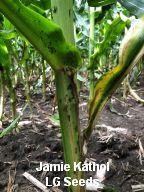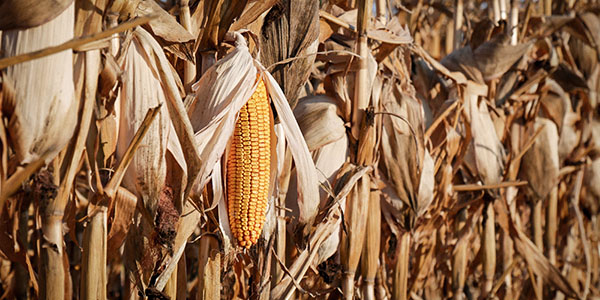AGRONOMICSUPPORT
YOU CAN TAKETO THE FIELD
Corn Aphids - A Late Season Reminder
I recently finished up doing late season lodging counts in corn test plots in the area. As I was going through these plots again during this time, I was reminded of a mid-season issue that I received multiple calls about. These calls pertained to corn leaf aphids. There were many areas this year that had populations get pretty heavy, and it had many growers wondering if they should spray to control them.
Corn leaf aphids injure a corn plant by tapping into the phloem of the plant to feed, which compromises the plants plumbing system for transporting sugars and other important compounds. In high enough densities, they can affect leaf function, plant growth and yield by limiting photosynthesis of the plant. A typical symptom of corn leaf aphids that can be noticed by anyone who walks through the corn during this time is the sticky honeydew excreted onto the corn plant by the aphids.
Universities state that it is rare and inconsistent for a spray application to be economically beneficial, especially if made after pollination is complete. Populations normally peak at roughly R3 (milk) growth stage and often begin to decrease at R4 (dough) stage. Published thresholds for spray treatments are for pre-pollination timing and there are none for later growth stages. If a spray application is made, there is no guarantee that it will control the aphid populations from returning rapidly if favorable environment continues because it is difficult to get good enough coverage of the plant to  kill them all in the lower part of the corn canopy. The picture to the right was taken this past summer at approximately R3 (milk) stage. It shows a relatively low level of infestation in corn in the lower canopy below the ear.
kill them all in the lower part of the corn canopy. The picture to the right was taken this past summer at approximately R3 (milk) stage. It shows a relatively low level of infestation in corn in the lower canopy below the ear.
Corn leaf aphids normally look to be more of an issue than they are. Your local agronomist may wish you had sprayed to eradicate them if he or she is getting sticky while walking your corn field, but it is often not worth the time and money to spray for them. This has been a brief overview of the pest. If you have further questions, consult your local LG Seeds Technical Team Agronomist, or refer to the links below.
Sources and additonal information:
- “Aphids in Corn: The Dilemma of Post-Pollination Infestations.” Aphids in Corn: The Dilemma of Post-Pollination Infestations, https://blog-crop-news.extension.umn.edu/2015/08/aphids-in-corn-dilemma-of-post.html.
- Hodgson, Erin, et al. “Managing Aphids in Corn.” Managing Aphids in Corn | Integrated Crop Management, https://crops.extension.iastate.edu/cropnews/2016/08/managing-aphids-corn






Technical Team Agronomist